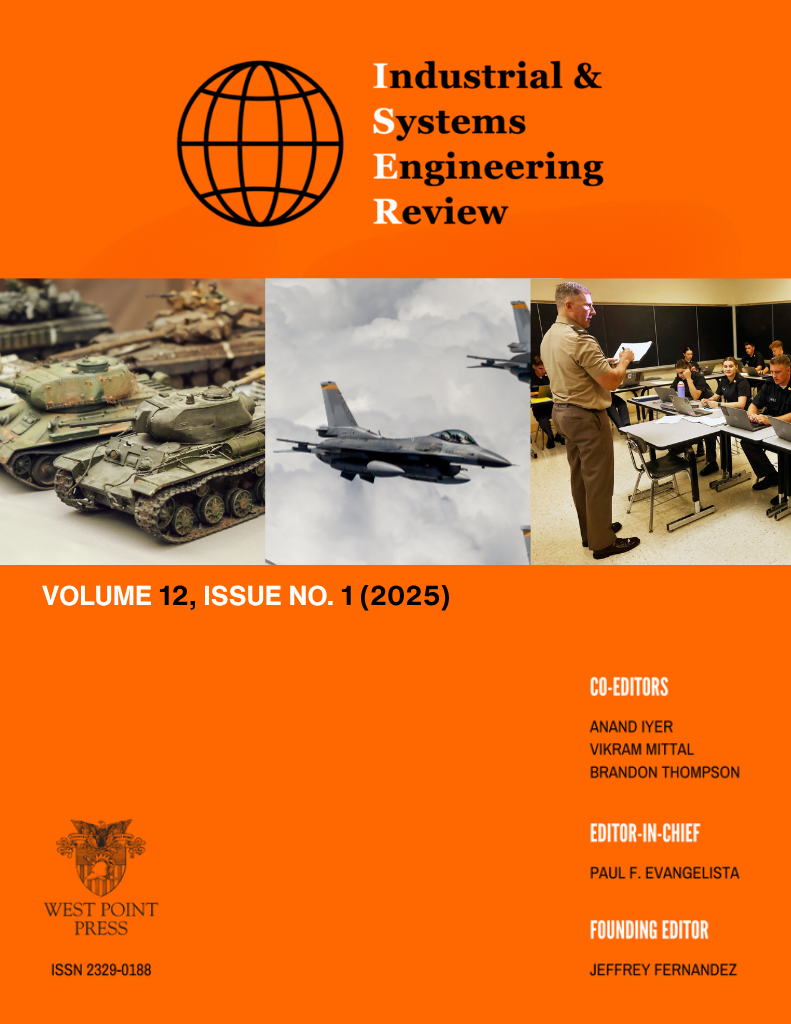References
Brown, Jr., C. (2020, August). CSAF 22 Strategic Approach—Accelerate Change or Lose. U.S. Air Force.
Causse, M., Chua, Z., Peysakhovich, V., Del Campo, N., & Matton, N. (2017). Mental workload and neural efficiency quantified in the prefrontal cortex using fNIRS. Scientific Reports, 7(1), Article 1.
Causse, M., Sénard, J.-M., Démonet, J. F., & Pastor, J. (2010). Monitoring Cognitive and Emotional Processes Through Pupil and Cardiac Response During Dynamic Versus Logical Task. Applied Psychophysiology and Biofeedback, 35(2), 115–123.
Charles, R. L., & Nixon, J. (2019). Measuring mental workload using physiological measures: A systematic review. Applied Ergonomics, 74, 221–232.
Deputy Defense Secretary. (2016). Deputy Secretary: Third Offset Strategy Bolsters America’s Military Deterrence.
Dussault, C., Jouanin, J.-C., Philippe, M., & Guezennec, C.-Y. (2005). EEG and ECG changes during simulator operation reflect mental workload and vigilance. Aviation, Space, and Environmental Medicine, 76(4), 344–351.
Federal Aviation Administration. (2022, March 29). Glider Flying Handbook. Federal Aviation Administration.
Gateau, T., Ayaz, H., & Dehais, F. (2018). In silico vs. Over the Clouds: On-the-Fly Mental State Estimation of Aircraft Pilots, Using a Functional Near Infrared Spectroscopy Based Passive-BCI. Frontiers in Human Neuroscience, 12.
Harrison, J., Izzetoglu, K., Ayaz, H., Willems, B., Hah, S., Ahlstrom, U., Woo, H., Shewokis, P. A., Bunce, S. C., & Onaral, B. (2014). Cognitive Workload and Learning Assessment During the Implementation of a Next-Generation Air Traffic Control Technology Using Functional Near-Infrared Spectroscopy. IEEE Transactions on Human-Machine Systems, 44(4), 429–440.
Harrison, J., Izzetoglu, K., Ayaz, H., Willems, B., Hah, S., Woo, H., Shewokis, P. A., Bunce, S. C., & Onaral, B. (2013). Human Performance Assessment Study in Aviation Using Functional Near Infrared Spectroscopy. In D. D. Schmorrow & C. M. Fidopiastis (Eds.), Foundations of Augmented Cognition (Vol. 8027, pp. 433–442). Springer Berlin Heidelberg.
Hicks, J. S., Durbin, D. B., Morris, A. W., & Davis, B. M. (2014). A Summary of Crew Workload and Situational Awareness Ratings for U.S. Army Aviation Aircraft: Defense Technical Information Center.
Higginbotham, K., & Skaff, M. (2023, December). e-Pilot: Even Great Pilots Need a Cognitive Aid [White Paper]. Lockheed Martin Aeronautics.
Kakkos, I., Dimitrakopoulos, G. N., Gao, L., Zhang, Y., Qi, P., Matsopoulos, G. K., Thakor, N., Bezerianos, A., & Sun, Y. (2019). Mental Workload Drives Different Reorganizations of Functional Cortical Connectivity Between 2D and 3D Simulated Flight Experiments. IEEE Transactions on Neural Systems and Rehabilitation Engineering, 27(9), 1704–1713.
Kramer, A. F. (1990). Physiological Metrics of Mental Workload: A Review of Recent Progress. Defense Technical Information Center.
Mathôt, S., & Ivanov, Y. (2019). The effect of pupil size and peripheral brightness on detection and discrimination performance. PeerJ, 7, e8220.
Matthews, G., Reinerman-Jones, L. E., Barber, D. J., & Abich, J. (2015). The Psychometrics of Mental Workload: Multiple Measures Are Sensitive but Divergent. Human Factors: The Journal of the Human Factors and Ergonomics Society, 57(1), 125–143.
Murata, A., & Iwase, H. (1998). Evaluation of Mental Workload by Fluctuation Analysis of Pupil Area. Proceedings of the 20th Annual International Conference of the IEEE Engineering in Medicine and Biology Society. Vol.20 Biomedical Engineering Towards the Year 2000 and Beyond (Cat. No.98CH36286), 6, 3094–3097.
National Commission on Military Aviation Safety. (2020, December 1). Report to the President and the Congress of the United States. National Commission on Military Aviation Safety.
Recarte, M. A., & Nunes, L. M. (2003). Mental workload while driving: Effects on visual search, discrimination, and decision making. Journal of Experimental Psychology: Applied, 9(2), 119–137.
Shaffer, F., & Ginsberg, J. P. (2017). An Overview of Heart Rate Variability Metrics and Norms. Frontiers in Public Health, 5, 258.
U.S. Air Force. (2019). U.S. Air Force 2030 Science and Technology Strategy.
van Weelden, E., Alimardani, M., Wiltshire, T. J., & Louwerse, M. M. (2022). Aviation and neurophysiology: A systematic review. Applied Ergonomics, 105, 103838.
Young, M. S., Brookhuis, K. A., Wickens, C. D., & Hancock, P. A. (2015). State of science: Mental workload in ergonomics. Ergonomics, 58(1), 1–17.








